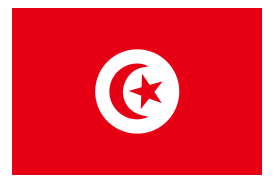Language/Tunisian-arabic/Culture/Popular-Legends-and-Characters
As a Tunisian Arabic language teacher with 20 years of experience, I've always found that introducing students to the cultural aspects of Tunisia is a great way to keep them engaged and interested in learning the language. In this lesson, we will delve into Tunisian folklore and mythology, and explore the most popular legends and characters that have played a significant role in our history.
Tunisian Folklore and Mythology
Tunisian folklore is rich with stories of mythical creatures, spirits, and legendary heroes that have been passed down from generation to generation. These stories, which combine elements of Arabic, Berber, and Islamic cultures, serve as a means of preserving our heritage and traditions. Here are some of the most popular legends and characters from Tunisian folklore and mythology:
Aicha Kandicha
Aicha Kandicha is a legendary spirit in Tunisia that is believed to inhabit water sources such as rivers and wells. She is depicted as a beautiful woman with long hair, sometimes wearing a long dress. According to legend, she can cause mischief and harm to those who displease her or disturb her water source.
Baba Yaga
Baba Yaga is a popular figure in Tunisian folklore, known for her characteristic iron teeth and a long nose. She is often depicted as a witch and is believed to be able to shape-shift into different forms to cause harm to humans.
Hannibal Barca
Hannibal Barca is a legendary Carthaginian general known for his military tactics and strategy. He is considered a national hero in Tunisia and his battles against the Roman Empire have become part of Tunisian folklore.
Jinn
Jinn are spirits in Arabian mythology that are believed to inhabit the unseen world. In Tunisian folklore, jinn are believed to be able to possess humans and cause harm or misfortune. They are often depicted as shape-shifters who can take on many different forms.
Kelb el-Khazouk
Kelb el-Khazouk is a legendary black dog in Tunisian folklore that is believed to be an omen of death. According to legend, he appears to people who are about to die, and his presence is often taken as a sign that death is near.
Medusa
Medusa is a well-known figure in Greek mythology, but she also has a significant presence in Tunisian folklore. According to legend, her head is buried in the city of Carthage, and it is said that anyone who looks upon it will be cursed.
Ifriqiya
Ifriqiya is the ancient name for Tunisia and is often associated with legendary queen Dihya, who fought against Arab invasion in the 7th century. According to legend, Dihya was a warrior queen who led the Berber armies and was known for her bravery and strategic skills.
Conclusion
In this lesson, we explored some of the most popular legends and characters from Tunisian folklore and mythology. Teaching Tunisian Arabic is not just about language acquisition, but also about cultural exchange and a deeper appreciation for the country's history and traditions. By understanding Tunisian folklore and mythology, we can gain insights into our cultural identity and preserve our heritage for future generations.

